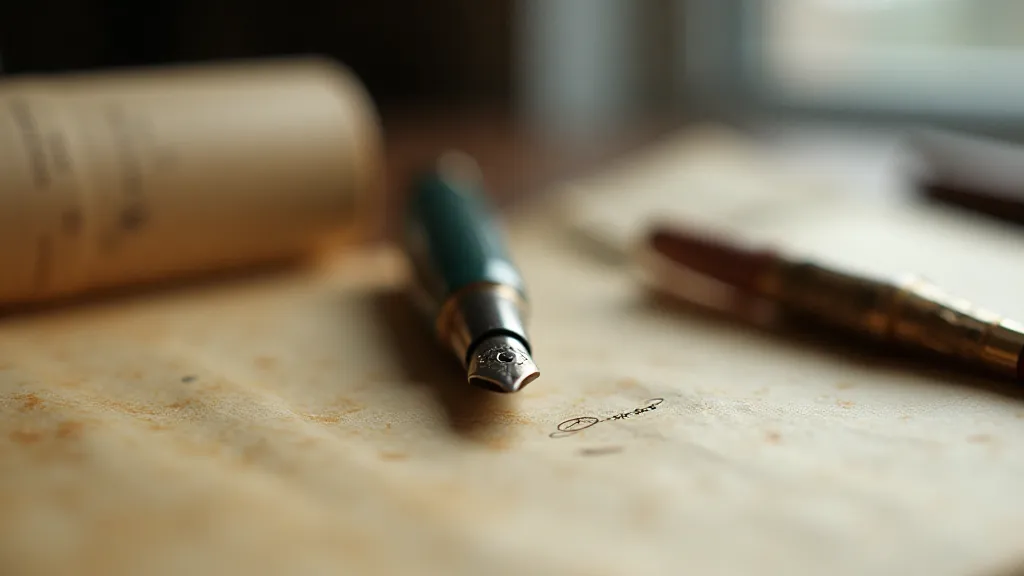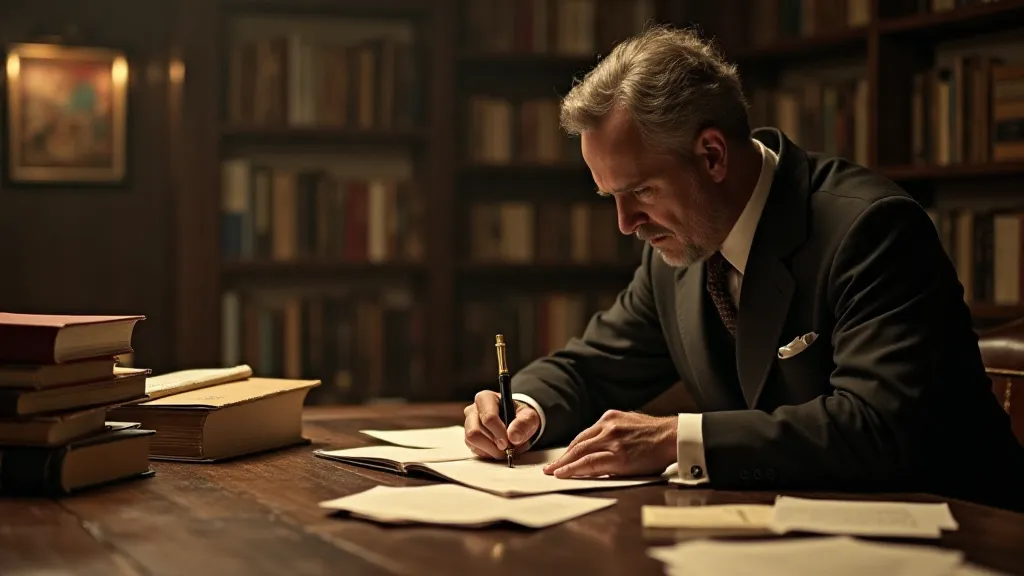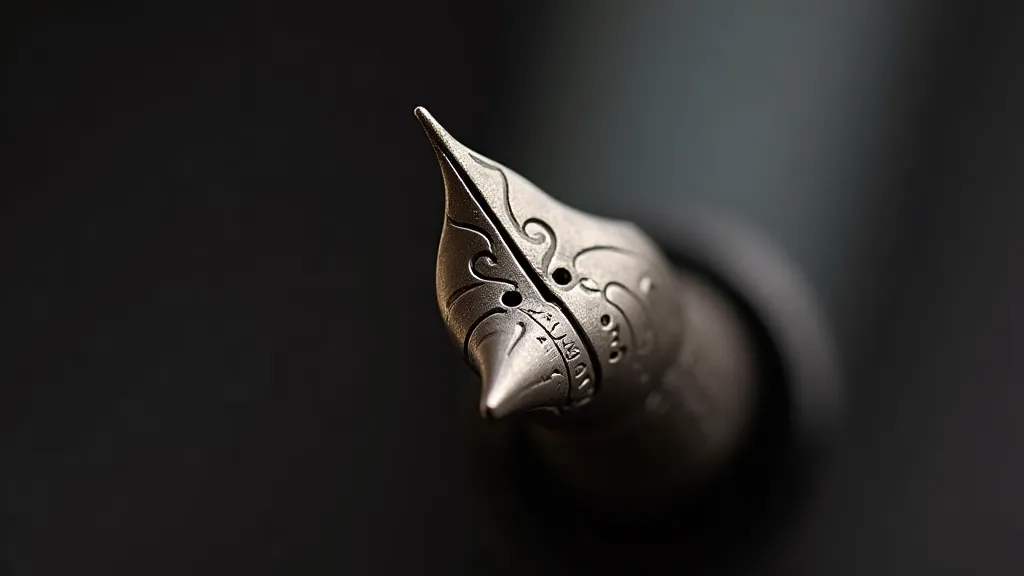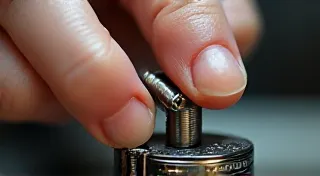The Ghost of Ink: How Early Pen Design Echoes Lost Writing Styles
There’s a quiet melancholy that settles when you hold an antique pen. It's not just the cool weight of vulcanite or the intricate carving of gold filigree; it’s a feeling of connection to hands long gone, minds that wrestled with language and poured their thoughts into ink on paper. We, as modern users of keyboards and digital interfaces, have largely forgotten the deliberate act of writing, the muscle memory required, the very *feel* of a pen guiding thoughts into tangible words. Early pen design, surprisingly, wasn't just about aesthetics or engineering – it was about shaping the very styles and habits of the people who used them.
Imagine a world before standardized fonts and the speed of digital communication. Communication was slower, more considered. A letter wasn’t a fleeting email; it was an investment of time and emotion. And the pen, the tool with which that communication occurred, subtly influenced its tone and character. Think of the flowing script favored by those using elegant dip pens with flexible nibs – a reflection of the leisure and refinement expected of letter writing at the time. Contrast this with the more functional, often shorter strokes of a fountain pen user in a bustling office environment.

The Era of the Flexible Nib
The late 18th and 19th centuries were dominated by the flexible nib pen. These weren’t simply pens; they were instruments of artistry. A skilled writer could create a breathtaking range of thick and thin lines just by varying the pressure applied to the nib. Spencerians, the masters of ornate copperplate script, relied heavily on this technology. Their letters weren’t just messages; they were performances, exhibitions of skill and elegance. The pen dictated, to a significant degree, the style of writing—long, flowing ascenders and descenders, elaborate flourishes, and a sense of rhythmic grace. The pen's flexibility invited a style of script that was fluid and expressive. We see echoes of this in the emphasis on calligraphy and elaborate handwriting lessons in Victorian-era schools.
I remember the first time I saw a beautifully executed Spencerian hand. It wasn’t in a textbook or a museum; it was on a faded letter penned by my great-grandmother. The sheer beauty of the script, the confident strokes, the elegant loops – it felt like encountering a lost language. I tried to emulate it, of course, but quickly realized just how much skill and practice were required. It’s humbling to consider that entire generations were taught this art, this intricate dance between pen and paper. The pens themselves were often lovingly crafted, each nib meticulously shaped to achieve the perfect level of flexibility.
The Rise of the Fountain Pen and a Changing Style
The introduction of the fountain pen in the late 19th and early 20th centuries brought about a subtle shift. While initially mimicking the styles achieved with flexible nibs, fountain pens ultimately encouraged a more standardized and, some might argue, a less expressive form of handwriting. The fixed nature of the nib, while offering convenience and reliability, diminished the potential for dramatic variations in line thickness. The rise of business and the need for more legible correspondence further drove this trend.
Brands like Waterman, Parker, and Montblanc became household names, and their pens, though often beautifully crafted, catered to a growing demand for practicality and consistency. The long, elaborate flourishes of Spencerian script slowly gave way to a more compact and functional style. The focus shifted from the performance of writing to the conveyance of information. This isn’t to say that beautiful handwriting disappeared – far from it – but the dominant style of writing became more uniform.

The Influence of Materials and Design
Beyond the nib itself, the materials used in pen construction also subtly influenced writing habits. The weight and feel of a pen in the hand impacted the writer’s control and pressure. Heavy, substantial pens, like those made from ebonite or precious metals, demanded a more deliberate and controlled hand. Lighter pens, while easier to handle, might encourage a more hurried and less thoughtful style.
Consider the use of celluloid, a popular material in early fountain pens. Its inherent elasticity offered a unique feel that influenced the way writers held and manipulated the pen. The texture of the grip, the smoothness of the barrel – all these elements contributed to the overall writing experience and, by extension, to the style of writing that emerged.
Collecting and Appreciating the Legacy
Collecting antique pens isn't just about acquiring beautiful objects; it’s about preserving a tangible link to the past. Each pen tells a story – a story of its maker, its owner, and the era in which it was created. Holding a Waterman from the early 1900s, or a Parker Vacumatic from the 1930s, allows us to connect with those who came before us and to appreciate the craftsmanship and artistry that went into their creation.
Restoring these pens, carefully cleaning and repairing them, is a labor of love, a way of ensuring that their legacy continues. Even simple restoration – replacing a dried-out sac or polishing a tarnished nib – can breathe new life into these historical artifacts. It’s a process that fosters a deeper understanding and appreciation for the ingenuity and artistry of the past. Recognizing the subtle connection between pen design and writing styles is a key component of that appreciation.

A Lost Art Reclaimed
The modern world has largely forgotten the deliberate act of writing. We’re surrounded by devices that allow us to communicate instantaneously, but we’ve lost something in the process – the art of slow, considered writing, the connection between hand, pen, and thought. By appreciating the history of antique pens, by recognizing the subtle ways in which their design shaped the writing styles of the past, we can perhaps reclaim a small piece of that lost art, and rediscover the quiet satisfaction of putting pen to paper.





